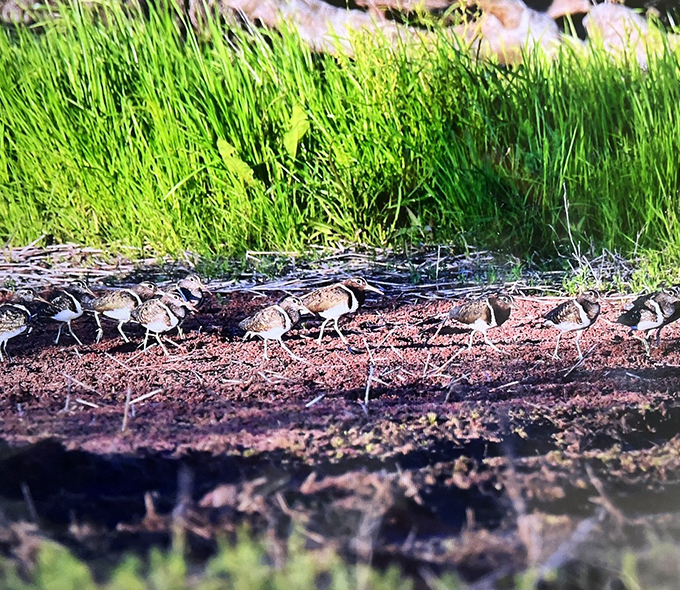Murrumbidgee wetlands a hotspot for threatened waterbirds
A series of small wetlands north of Balranald is proving a magnet for threatened waterbird species, including the nationally endangered Australian painted snipe.
A local landholder and bird enthusiast has identified 25 Australian painted snipe wading around the wetlands in the Western Lakes system, which are supported by the NSW Government's Water for the Environment program.
A cryptic species not often sighted, the Australian painted snipe hides in vegetation, appears to rest by day, and becomes active towards evening and at night. The population of this mud-wading rarity is estimated to be only around 350 nationally.
Murrumbidgee Senior Environmental Water Manager James Maguire said the Australian painted snipe is not the only rare waterbird making its home in the Western Lakes system.
'These wetlands are becoming a hotspot for threatened waterbird species,' Mr Maguire said.
'The Australasian bittern was sighted at the same wetlands 2 years ago, and we've heard them calling again this year.'
The Australasian bittern population is estimated to be only 1,300.
'We've also recorded 240 freckled ducks during the winter and recently 25 blue-billed ducks.'
First spotted in the area 3 years ago, the Australian painted snipe made a welcome return in September 2023, spending 4 months 'buzzing' around the system.
The NSW Department of Climate Change, Energy, the Environment and Water funded water management infrastructure across the wetlands system 15 years ago to facilitate delivery of water for the environment.
'As well as the passion and dedication of the landholders, we saw the potential habitat value of these sites - we invested in them, and now they are paying dividends year after year,' Mr Maguire said.
Given the species' national significance, the program will now manage the small wetlands specifically for the Australian painted snipe in partnership with the Commonwealth Environmental Water Holder.
'We hope they'll return in spring to a drawn-down, partly full wetland with good wetted-up fringes for them to forage.'
'In our environmental water management, we are mindful of having varying water levels across the system.
'If something dries out, we'll rewet it – they seem to like that.
'We'll prioritise getting the water there at the right time so habitats are similar to what we experienced this year.'
Monitoring of the wetlands will increase with additional cameras installed.
NSW Environmental Water Manager Rex Conallin said landholders had played a key role in achieving these positive outcomes.
Local landholders and passionate birdwatchers spend hours taking photos, setting up cameras and collecting data.
'Landholder research combined with targeted water management is yielding positive results,' Mr Conallin said.
'This is citizen science at its best. Landholders go above and beyond because they are passionate about the environmental outcomes they see from environmental flows.'
The wetlands are a prime example of the residual benefits of water for the environment, providing successional habitat for different species when environmental flows occur.
'The ducks and swans are first to arrive, then we see the grebes, herons and egrets, and finally, as the wetland dries, the waders,' Mr Maguire said.
'We are getting a lot of positive outcomes months and even years after the initial environmental watering event.'
